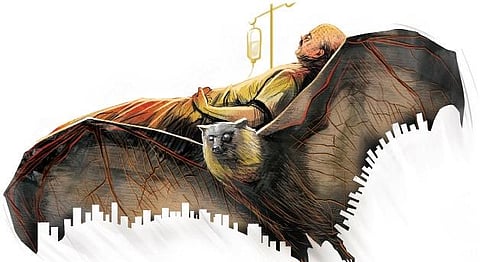

HYDERABAD: In recent years, the world has been no stranger to the ominous term ‘virus.’ The global population has witnessed the profound impact of viruses like Corona and Ebola. However, amidst the well-known adversaries, a new viral threat has emerged: the Nipah virus.
To confront any disease effectively, knowledge and preventive measures are paramount. Let us unmask the Nipah virus with insights provided by Dr Syed Abdul Aleem, Consultant Pulmonologist at CARE Hospitals.
In humans, Nipah virus infection can manifest in various clinical presentations, ranging from asymptomatic cases to acute respiratory infections and fatal encephalitis. The incubation period, which is the time from infection to symptom onset, is estimated to be between 4 to 14 days, with rare cases reporting an incubation period as long as 45 days. The case fatality rate varies between 40% to 75%, contingent upon local capabilities for epidemiological surveillance and clinical management during outbreaks.
Early detection is pivotal for effective treatment, making it crucial to recognise the symptoms of Nipah virus infection. The journey often begins with a high fever, emerging 3 to 14 days after exposure. Gastrointestinal symptoms such as nausea and vomiting are common, accompanied by warning signs like stiff neck, muscle pain, severe headaches, dizziness, sore throat, and mental confusion. In severe cases, the virus can plunge patients into a coma within 24-48 hours. The severity of symptoms can vary, and not all infected individuals will develop severe disease.
Diagnosing Nipah virus infection poses challenges due to its nonspecific initial signs. So, clinicians rely on clinical history during both acute and convalescent phases. Some key diagnostic tools include real-time polymerase chain reaction (RT-PCR) and enzyme-linked immunosorbent assay (ELISA) for antibody detection. Additional tests like PCR assays and cell cultures may also be employed.
As of now, there is no specific antiviral treatment for Nipah virus infection, and no drugs or vaccines are tailored for this virus. The World Health Organisation (WHO) has identified Nipah as a priority disease for research and development. Supportive care is the mainstay of treatment, and it may include hospitalisation, intravenous fluids for hydration, pain management, and mechanical ventilation for severe cases.